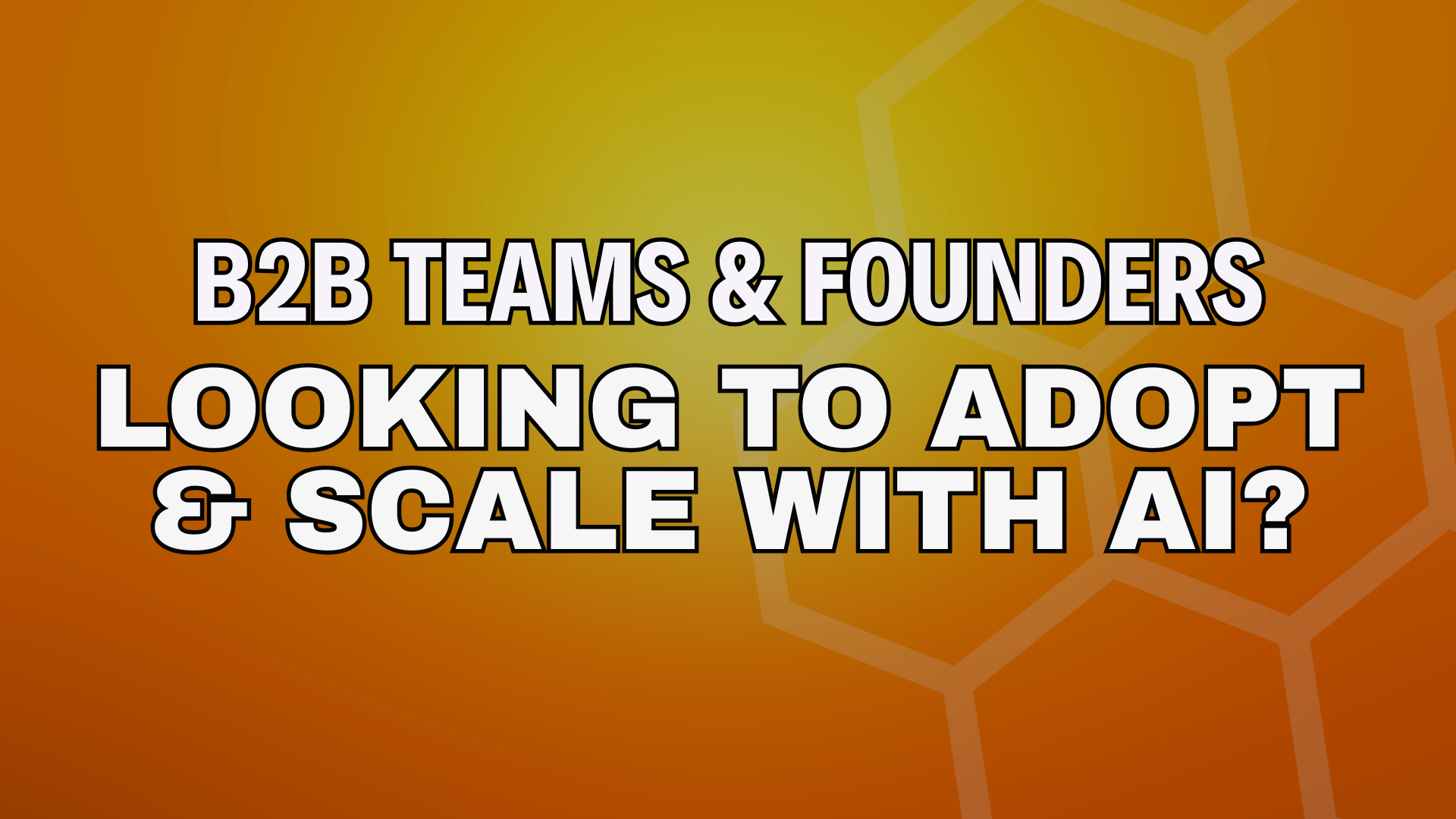Common AI SEO & GEO Mistakes—and How to Avoid Them
Introduction
As AI‑powered answer engines like ChatGPT, Perplexity, and Google AI Overviews replace traditional search, strategies that once worked—for keywords and backlinks—no longer guarantee visibility.
GEO (Generative Engine Optimization) extends SEO by building context, citations, and trust within AI models themselves.
Here’s how businesses trip up and how to avoid it.
Table of contents
Introduction: Why AI SEO and GEO Matter Now
Mistake 1: Over‑relying on AI—No Human in the Loop
Mistake 2: Keyword Stuffing & Over‑Optimization for GEO
Mistake 3: Ignoring Technical and Structured Data Basics
Mistake 4: Producing Derivative, Low‑Originality Content
Mistake 5: Outdated or Incorrect Brand Signals & Source Info
Mistake 6: Mis‑specifying Tool Capabilities & Metrics
Mistake 7: Focusing Only on Blog Content—not BoFu or Money Pages
How to Fix These: A Step‑by‑Step Playbook
Real‑World B2B SaaS Example (Use Case)
How Hyve Agency Helps: Brand Magnet + AI Onboarding Engine
FAQs (5 questions with answers)
Mistake 1: Over‑relying on AI—No Human in the Loop
Publishing AI‑generated drafts verbatim? Big mistake. That missing human edit results in bland, shallow content with no brand voice or E‑E‑A‑T signal. Google penalizes that.
Fix: Use AI as drafting + ideation assistant. Always add human context, expertise, and editing for nuance and uniqueness.
Mistake 2: Keyword Stuffing & Over‑Optimization for GEO
Some brands think GEO means cramming geo‑keywords or repeating phrases that AI recognizers will catch. But generative engines favor natural, semantic language—not robotic repetition.
Fix: Write conversationally. Use geo terms when relevant, but naturally. Ensure semantic richness—not unnatural density.
Mistake 3: Ignoring Technical and Structured Data Basics
If your site misses schema markup, has broken internal links, or no XML sitemap—then AI systems struggle to understand and verify your content. That kills credibility.
Fix: Implement structured data (schema.org), maintain mobile performance, fix 404s, use proper org and author schema metadata.
Mistake 4: Producing Derivative, Low‑Originality Content
AI often pulls from training data, regurgitating existing angles. That becomes derivative and adds no new value—exactly what search engines shy away from.
Fix: Add original examples, expert insight, unique frameworks, data, quotes—make it your own.
Mistake 5: Outdated or Incorrect Brand Signals & Source Info
AI engines sometimes pull stale data—like outdated prices or old descriptions—for your brand. That misrepresents you.
Fix: Regularly audit and update your online profiles, public-facing pages, knowledge panels, and citations so AI sees current info.
Mistake 6: Mis‑specifying Tool Capabilities & Metrics
Asking general chat models for search volume or keyword difficulty? They don’t have access to real-time data. They hallucinate.
Fix: Use AI for brainstorming; use tools like Semrush or Ahrefs for actual metrics. Combine both intelligently.
Mistake 7: Focusing Only on Blog Content—not BoFu or Money Pages
You might have high-volume top‑of‑funnel posts—but your service pages are missing in action. AI summaries may never mention them, starving revenue pages of visibility.
Fix: Build internal links from blogs into feature/solution pages. Use GEO-friendly citations to surface those money pages in AI responses.
How to Fix These: A Step-by-Step Playbook
Step 1: Run a Technical SEO & Content Audit
Start by scanning your website for schema markup, broken links, outdated metadata, mobile responsiveness, and page speed. These technical foundations directly influence how AI engines crawl and interpret your site.
Step 2: Define Your Topic & Intent Map
Go beyond basic keyword research. Define your content pillars, subtopics, and the questions your audience is asking—especially those AI engines are likely to summarize or cite in answers.
Step 3: Use AI for Drafting—but Not Publishing
Let AI tools help with ideation, outline creation, or first drafts. But never skip the human layer—add unique insights, examples, voice, and updated data. This is what separates you from the rest.
Step 4: Optimize for GEO Discoverability
Include clearly structured FAQs, answer-style content blocks, and relevant schema. Use your brand name and service offerings consistently so generative tools can connect your identity with your expertise.
Step 5: Build Internal Authority Signals
Interlink top-of-funnel content (like blogs) to high-intent pages (like features, pricing, or case studies). AI tools scan context—so help them make those connections clear.
Step 6: Improve Off-Site Signals
Get mentioned on relevant industry blogs, SaaS directories, and media sites. Generative engines often cite from these sources. The more trust you build off-site, the more visible you'll be in AI summaries.
Step 7: Track Your GEO Visibility
Use tools like AlsoAsked, Perplexity mentions, or custom GPTs to test if and how your brand shows up in AI-generated responses. Adjust your strategy based on where you are—or aren’t—appearing.
Real‑World B2B SaaS Use Case
Imagine a SaaS CRM platform wanting to rank for “best onboarding automation tool.” A traditional SEO article might rank—but AI engines might miss it if it lacks structured checklist answers, citation-worthy stats, or internal BoFu pages.
Instead, publish a long‑form pillar on “AI-Powered SaaS Onboarding,” with:
Schema‑tagged FAQ answers (“What is SaaS onboarding automation?”, “Why it matters?”, “Top features?”)
Bold internal links to pricing/features
Clear author + domain authority signals
Outreach for mentions in SaaS review roundups—so AI can cite you as trusted source.
That combination ensures AI overviews point to your brand, not just your blog.
How Hyve Helps
At The Hyve, we specialize in AI-first SEO website growth strategies that position your brand to thrive in a generative search environment. We don’t just optimize for Google—we design for discoverability across ChatGPT, Perplexity, Google SGE, and other AI-driven engines.
Hybrid SEO + GEO Strategy: We blend traditional SEO best practices with GEO (Generative Engine Optimization) frameworks—ensuring your site is technically sound, semantically rich, and structured for AI citation and relevance.
AI Search Visibility Engine: Our proprietary framework maps your site’s pages to likely AI prompts, answers, and knowledge graph entries. We enhance your content with schema markup, intent-driven metadata, and answer-optimized structures so generative engines recognize and surface your brand.
This isn't about chasing clicks—it's about earning authority, shaping how AI tools describe you, and increasing inbound leads through trusted answer pathways.
If you're ready to move beyond outdated SEO tactics and build a growth engine that works across both human and machine discovery—Hyve is your unfair advantage.
We help our clients build content systems that invest in discoverability, authority, and pipeline at scale.
Part of a B2B Team that feels like content and operations chaos?
Book a free call with us to audit your current systems and see how we help B2B teams adopt AI content and Ops engines to run and scale like clockwork.
FAQS
-
SEO focuses on rankings in Google search; AEO is about direct answer inclusion (e.g. voice assistants, answer snippets); GEO targets citation and visibility in generative AI responses. nogood.io+1marketvantage.com+1en.wikipedia.org+4en.wikipedia.org+4nogood.io+4
-
No. AI is for drafting and brainstorming. Human expertise is essential to ensure Domain Authority, originality, and brand voice.
-
Use visibility tools or run queries on generative platforms to see if your site is cited. Track brand-related mentions over time.
-
Absolutely. Schema and structured data help AI models understand and verify content—and improve chances of being used in their responses. oppgen.com
-
AI‑driven search is expanding rapidly. Gartner predicts big declines in traditional click-through rates—up to 40% traffic loss if you don’t adapt. GEO is no longer optional. en.wikipedia.org+1nogood.io+1
Looking for the complete comprehensive guide “AI‑Powered GTM Content & Client Onboarding: How B2B Brands Scale with Video, AI SEO & Operational Systems”?





